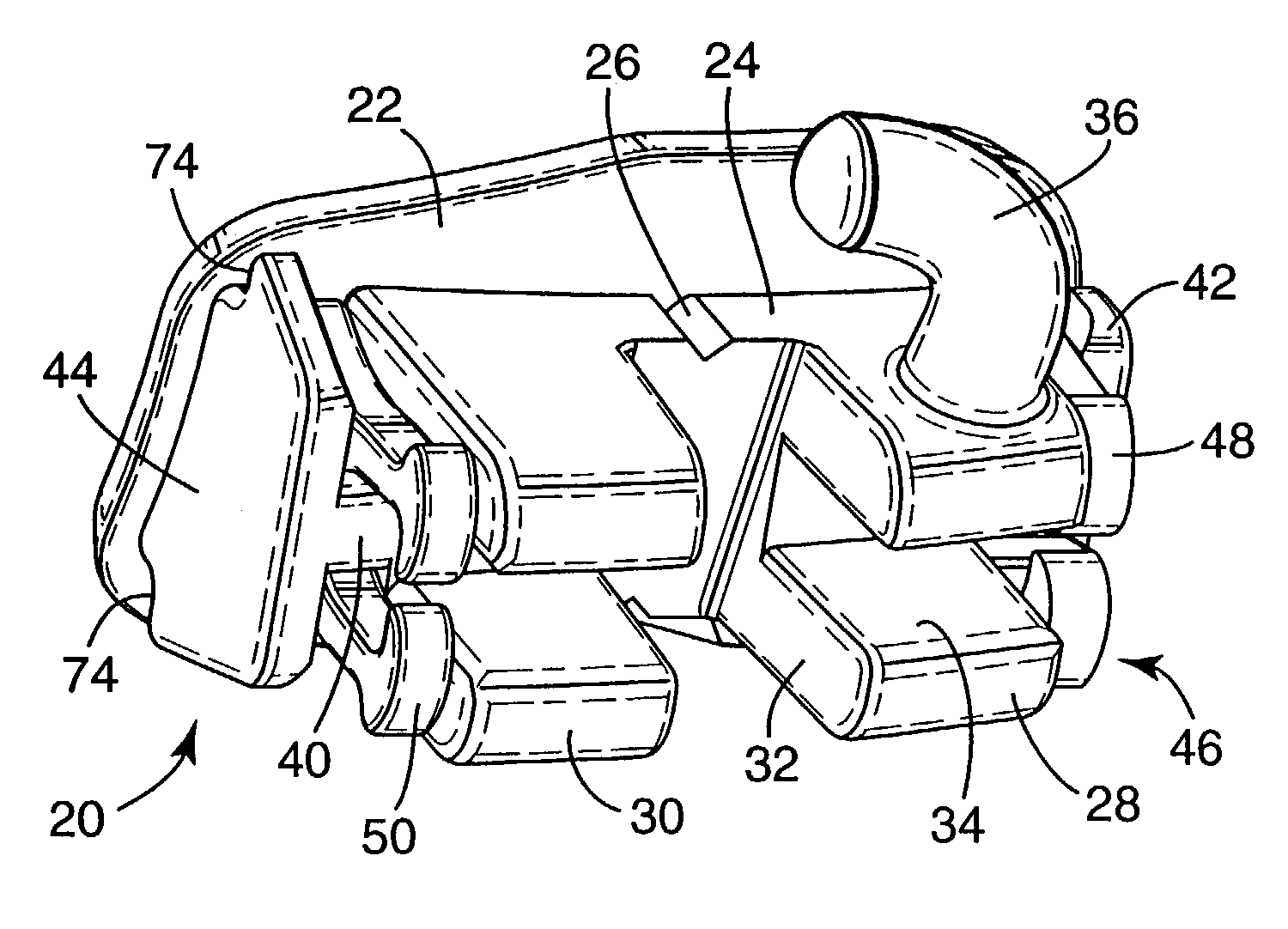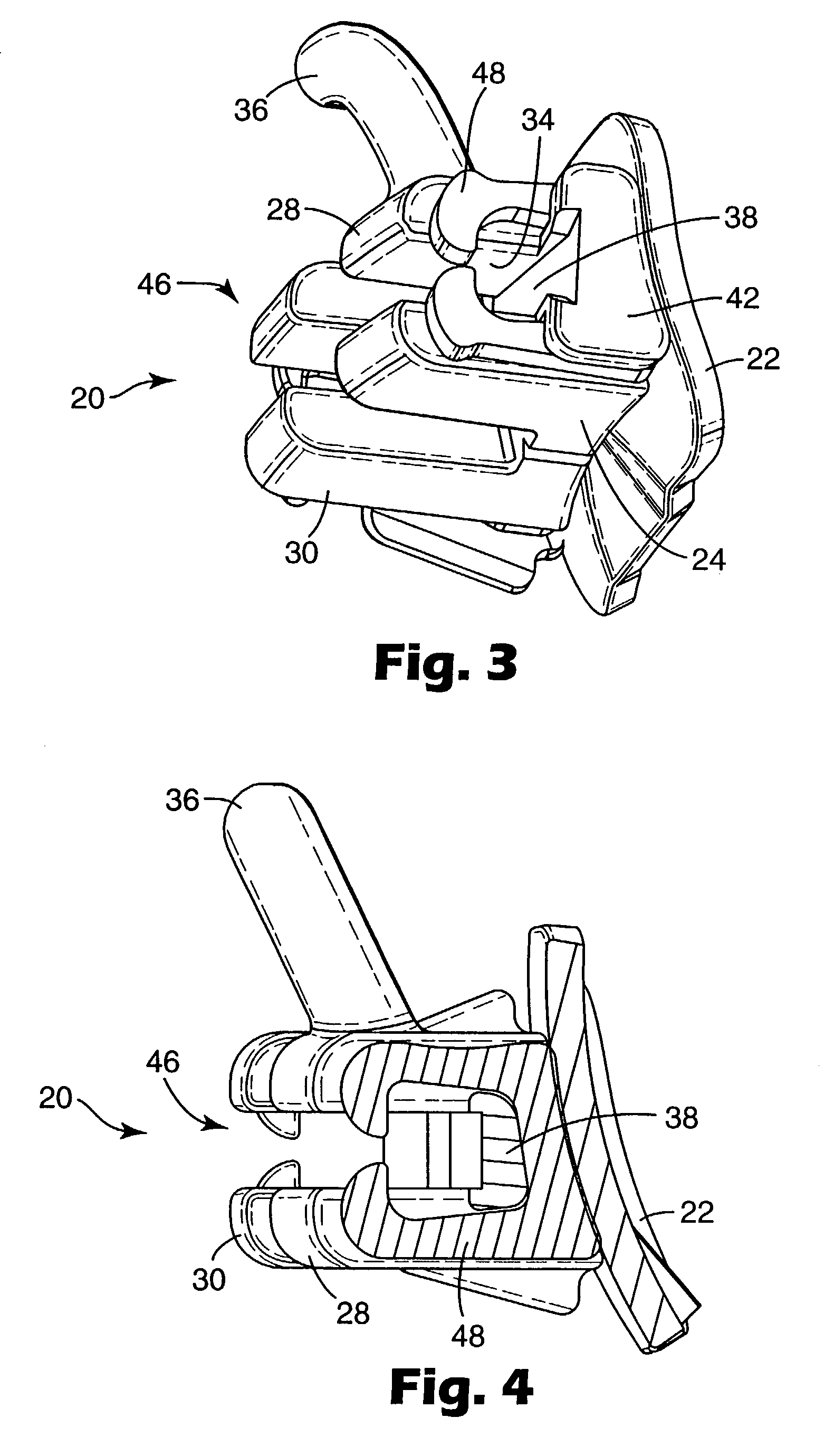Molar appliance for orthodontic therapy
a technology for orthodontic therapy and molars, applied in the field of molars and orthodontic appliances, can solve the problems of inconvenient disengagement of archwires, inconvenience for patients, and inconvenience for patients, and achieve the effects of improving self-ligating orthodontic appliances, facilitating disengagement of archwires, and good control over movement and positioning of appliances
- Summary
- Abstract
- Description
- Claims
- Application Information
AI Technical Summary
Benefits of technology
Problems solved by technology
Method used
Image
Examples
Embodiment Construction
[0038]An orthodontic appliance for a molar tooth constructed according to one embodiment of the present invention is illustrated in FIGS. 1–6 and is broadly designated by the numeral 20. The appliance 20 includes a base 22 for bonding the appliance 20 directly to the patient's tooth enamel of a molar tooth by the use of an adhesive. Preferably, the base 22 has an outwardly-facing concave compound contour that matches the convex compound contour of the patient's molar tooth surface. Optionally, the base 22 may be provided with grooves, particles, recesses, undercuts, a chemical bond enhancement material or any other material or structure or any combination of the foregoing that facilitates bonding the appliance directly to the patient's tooth surface.
[0039]A body 24 is connected to the base 22 and extends outwardly from the base 22 in a generally buccolabial direction (i.e., a direction toward the patient's lips or cheeks). The body 24 optionally includes a notch 26 located along its...
PUM
 Login to View More
Login to View More Abstract
Description
Claims
Application Information
 Login to View More
Login to View More - R&D
- Intellectual Property
- Life Sciences
- Materials
- Tech Scout
- Unparalleled Data Quality
- Higher Quality Content
- 60% Fewer Hallucinations
Browse by: Latest US Patents, China's latest patents, Technical Efficacy Thesaurus, Application Domain, Technology Topic, Popular Technical Reports.
© 2025 PatSnap. All rights reserved.Legal|Privacy policy|Modern Slavery Act Transparency Statement|Sitemap|About US| Contact US: help@patsnap.com



